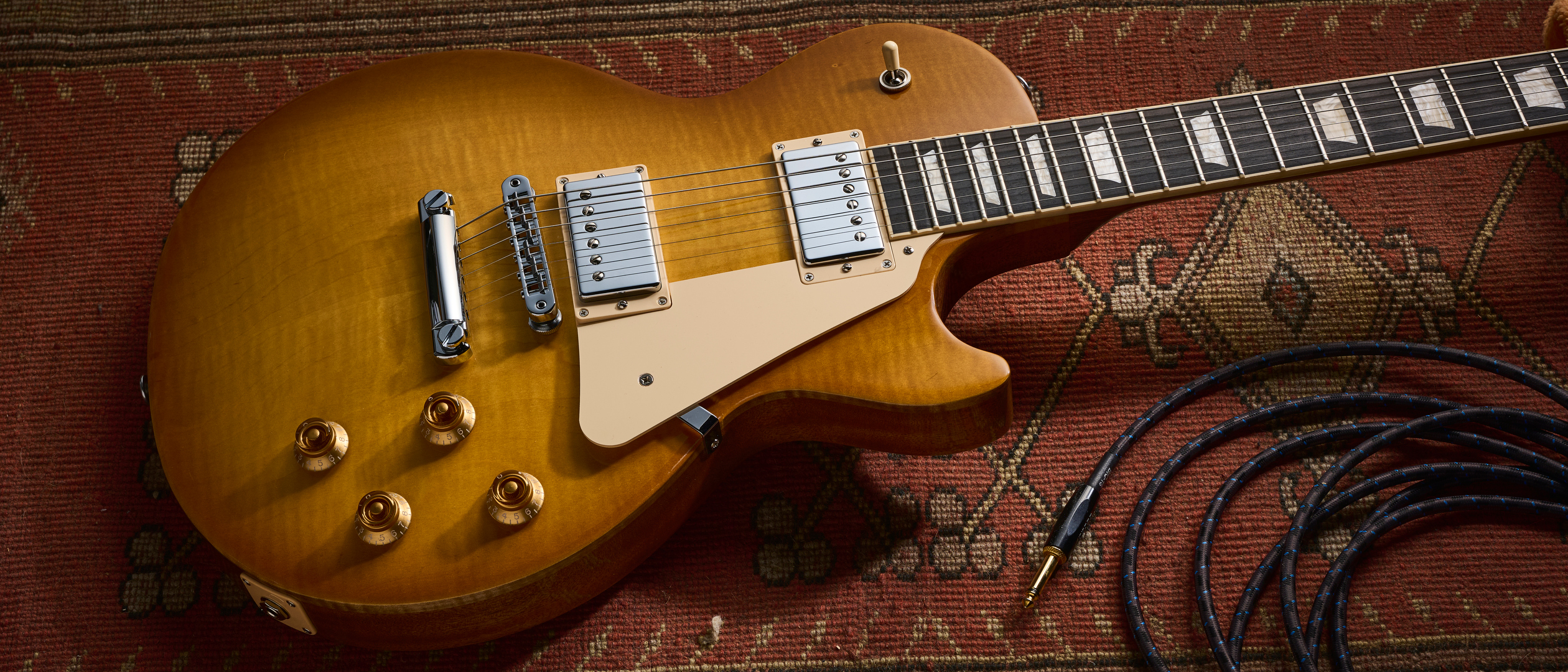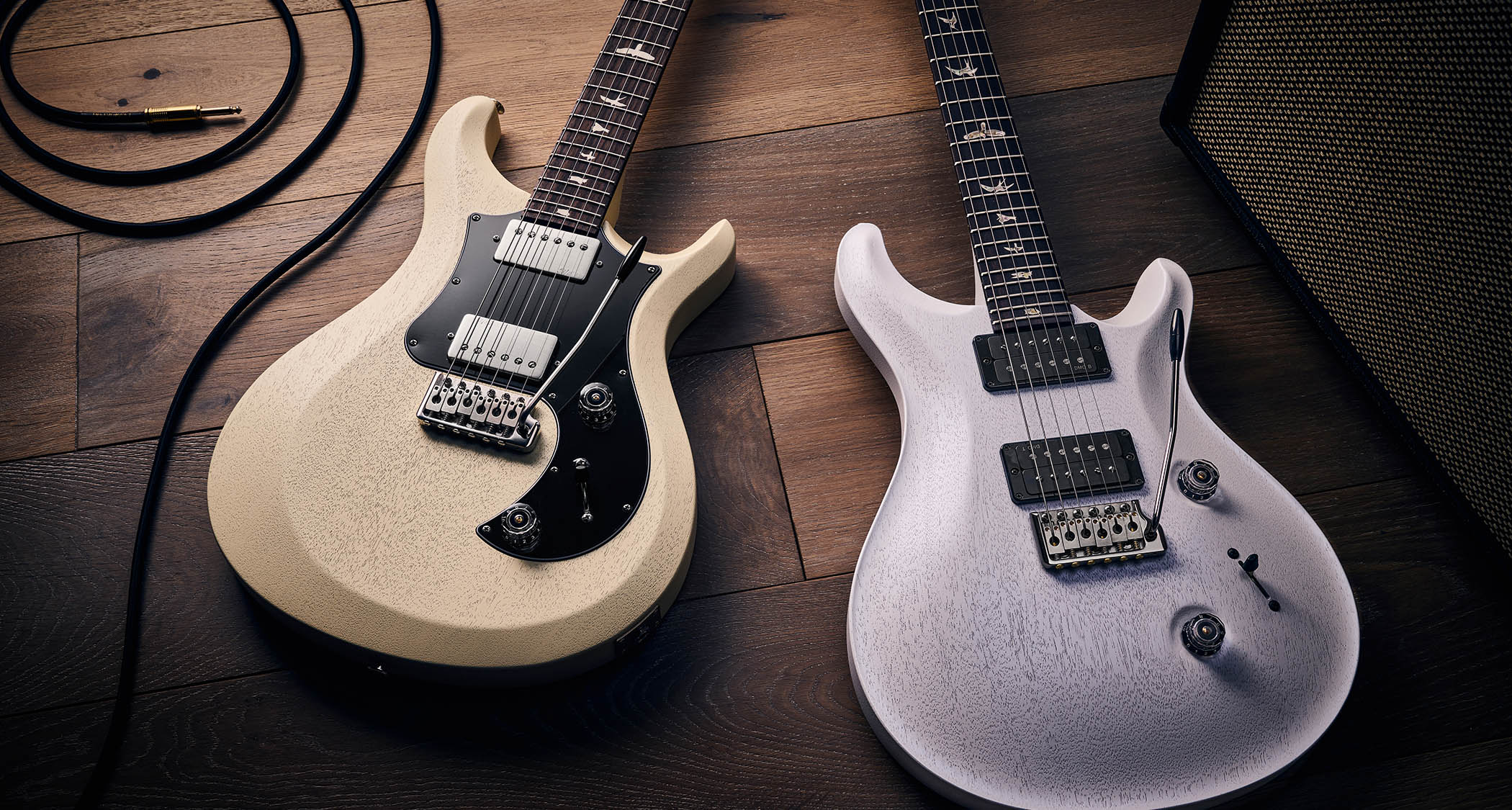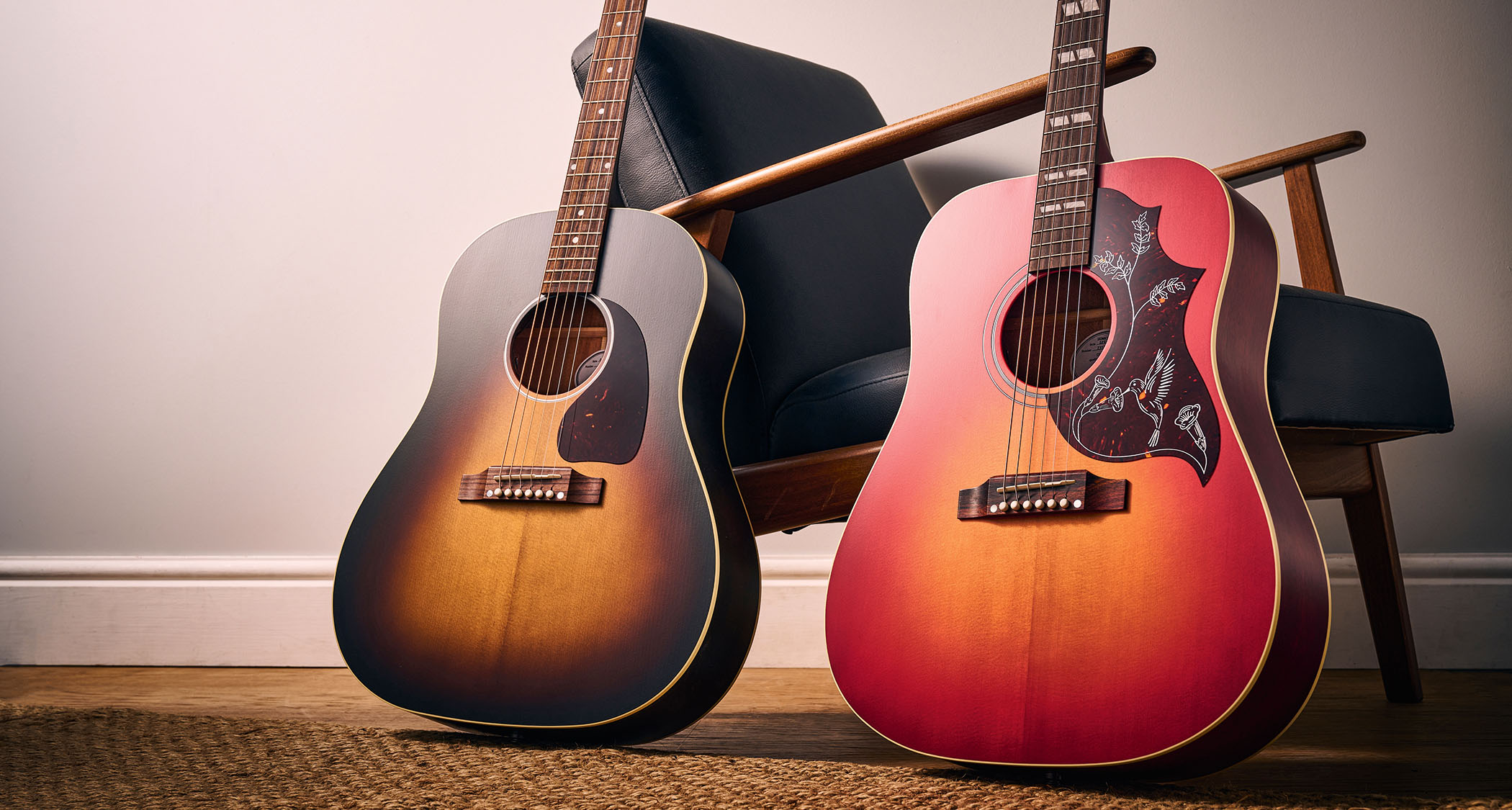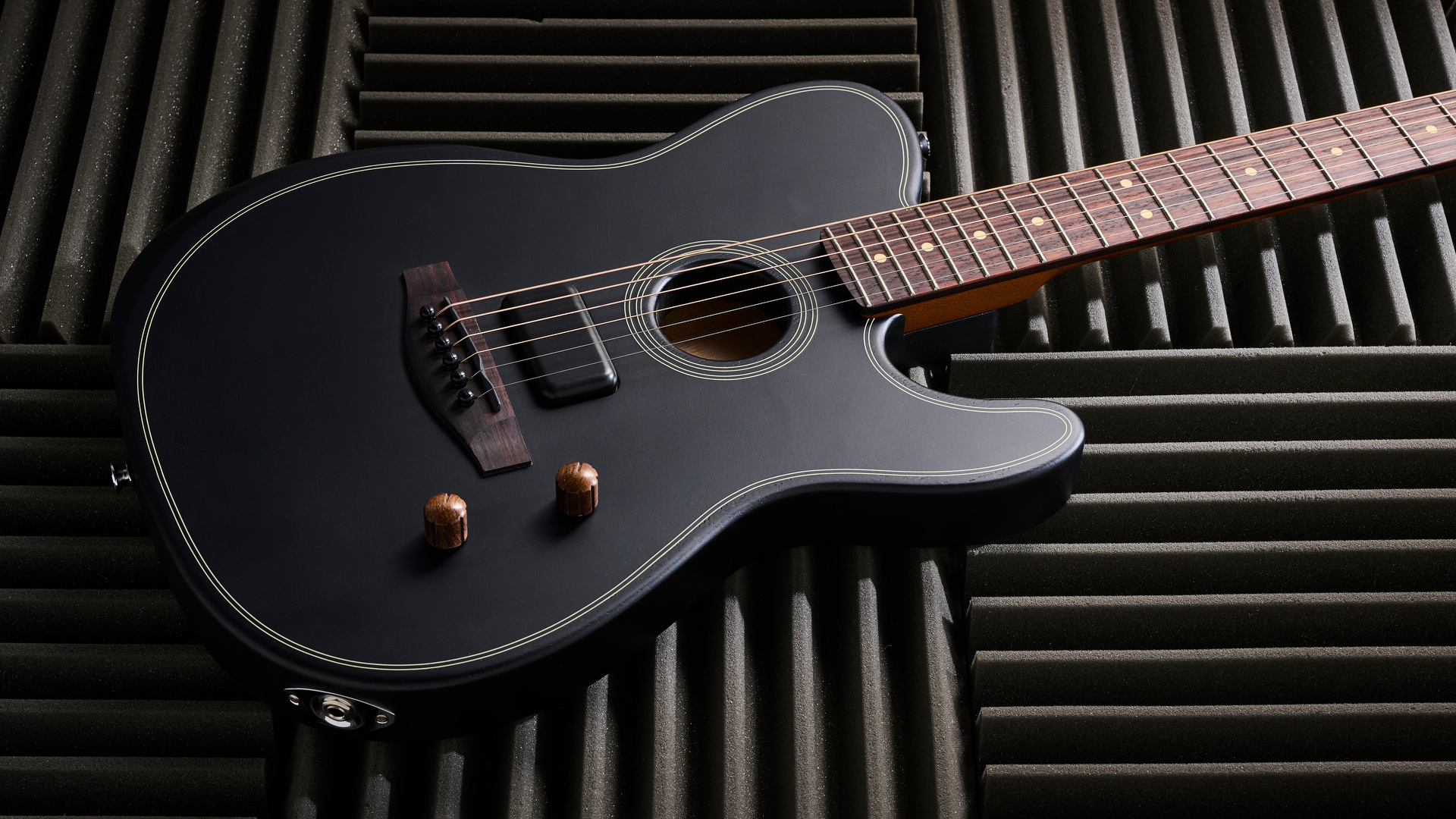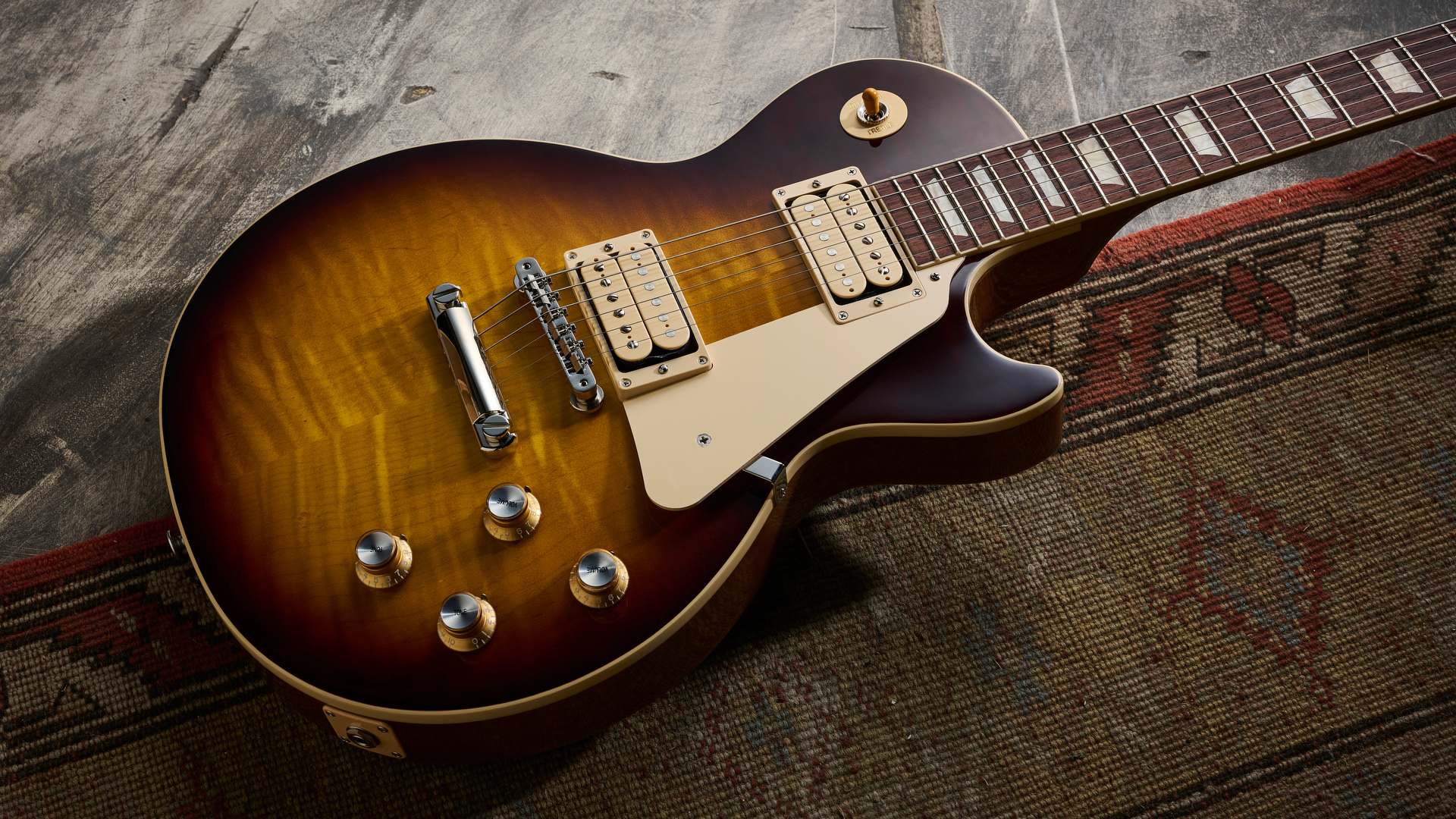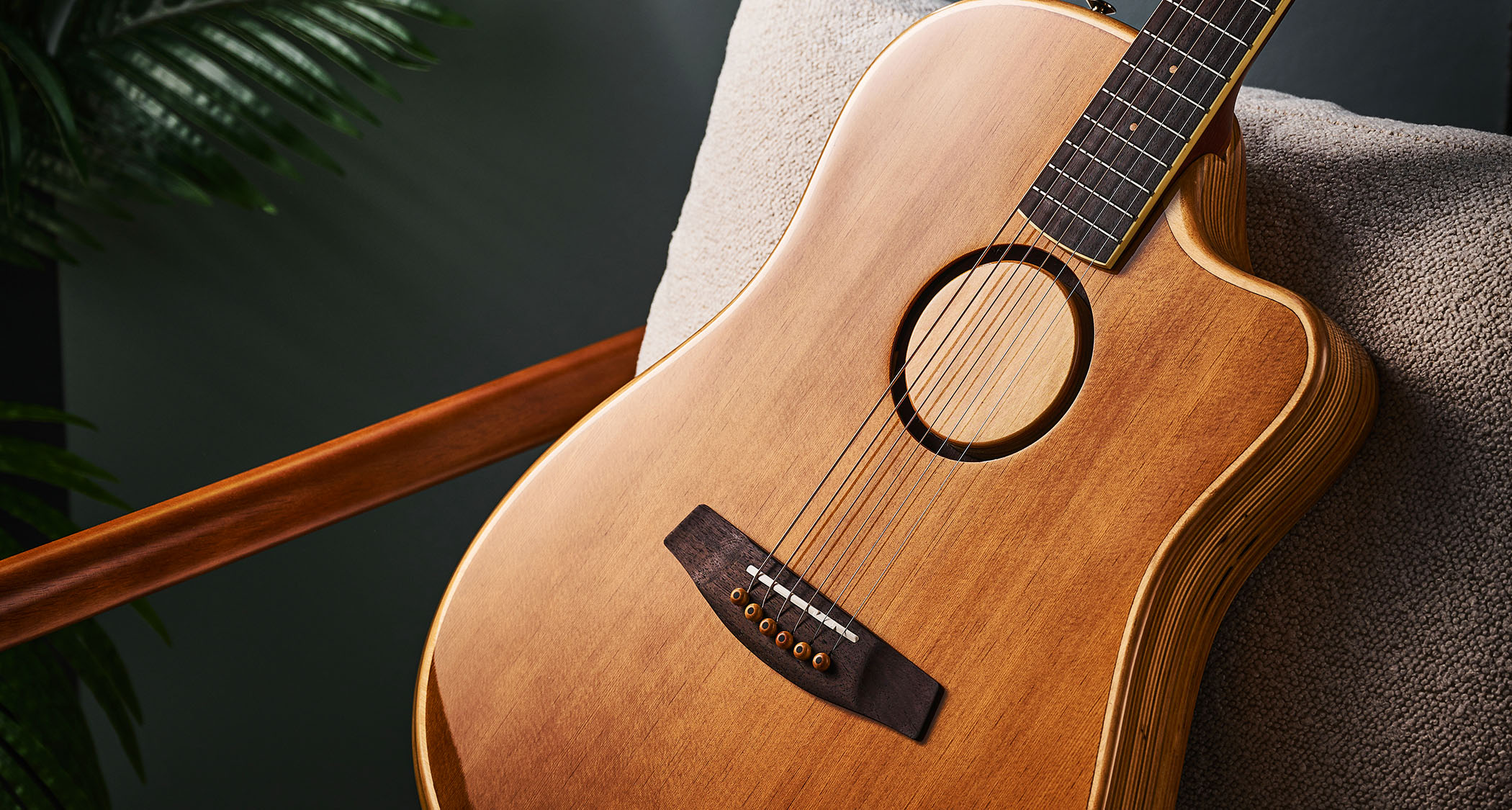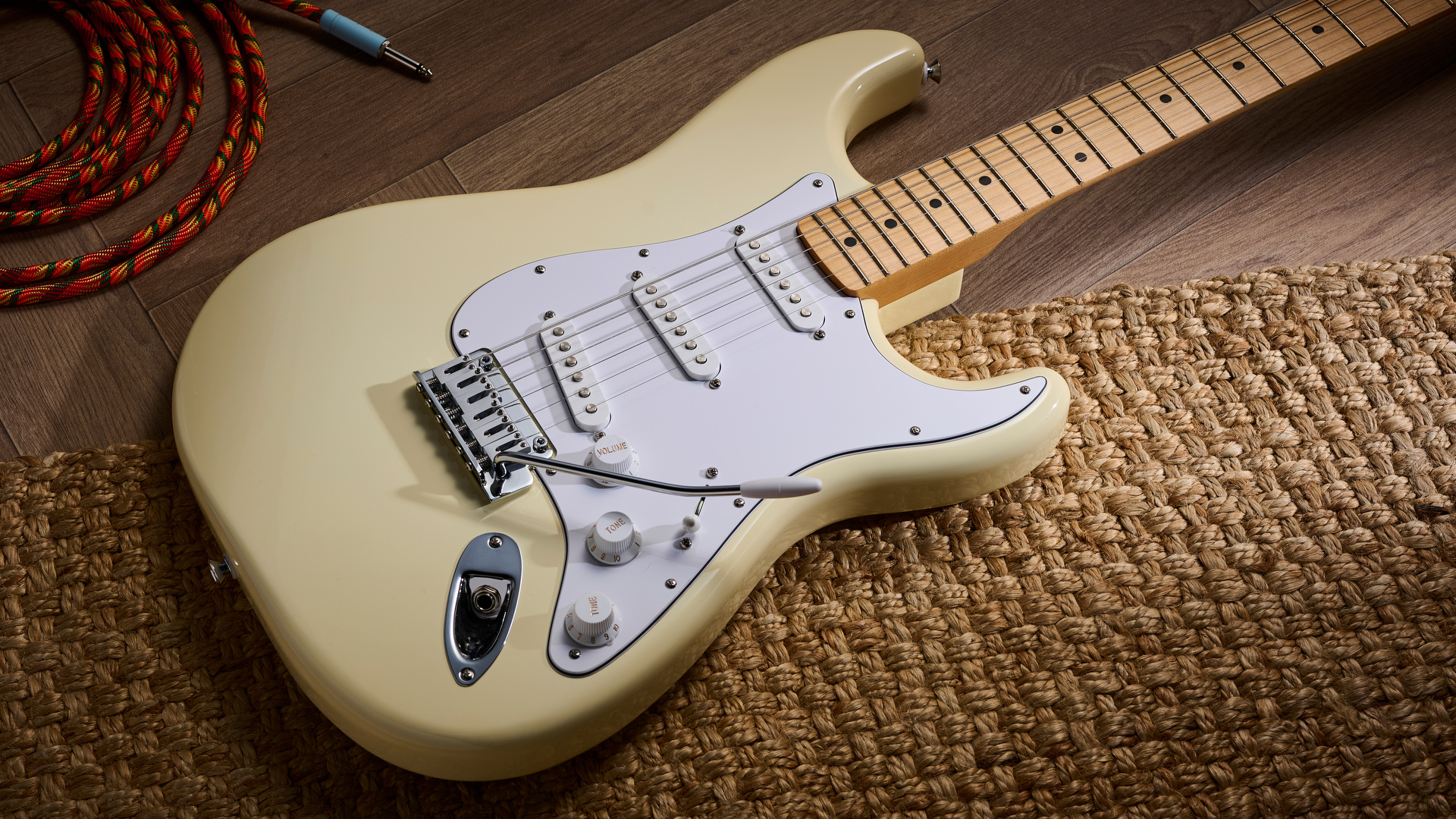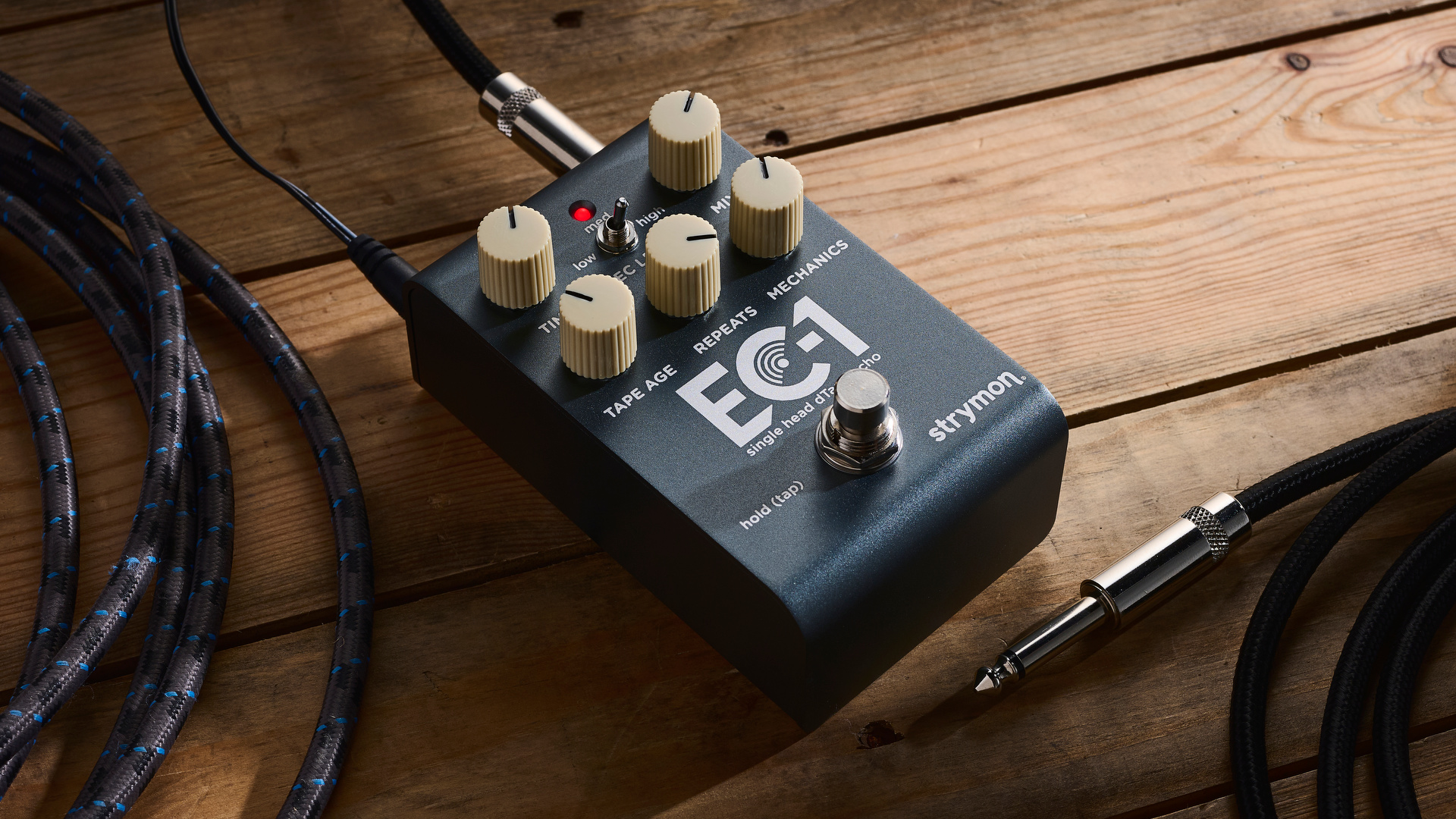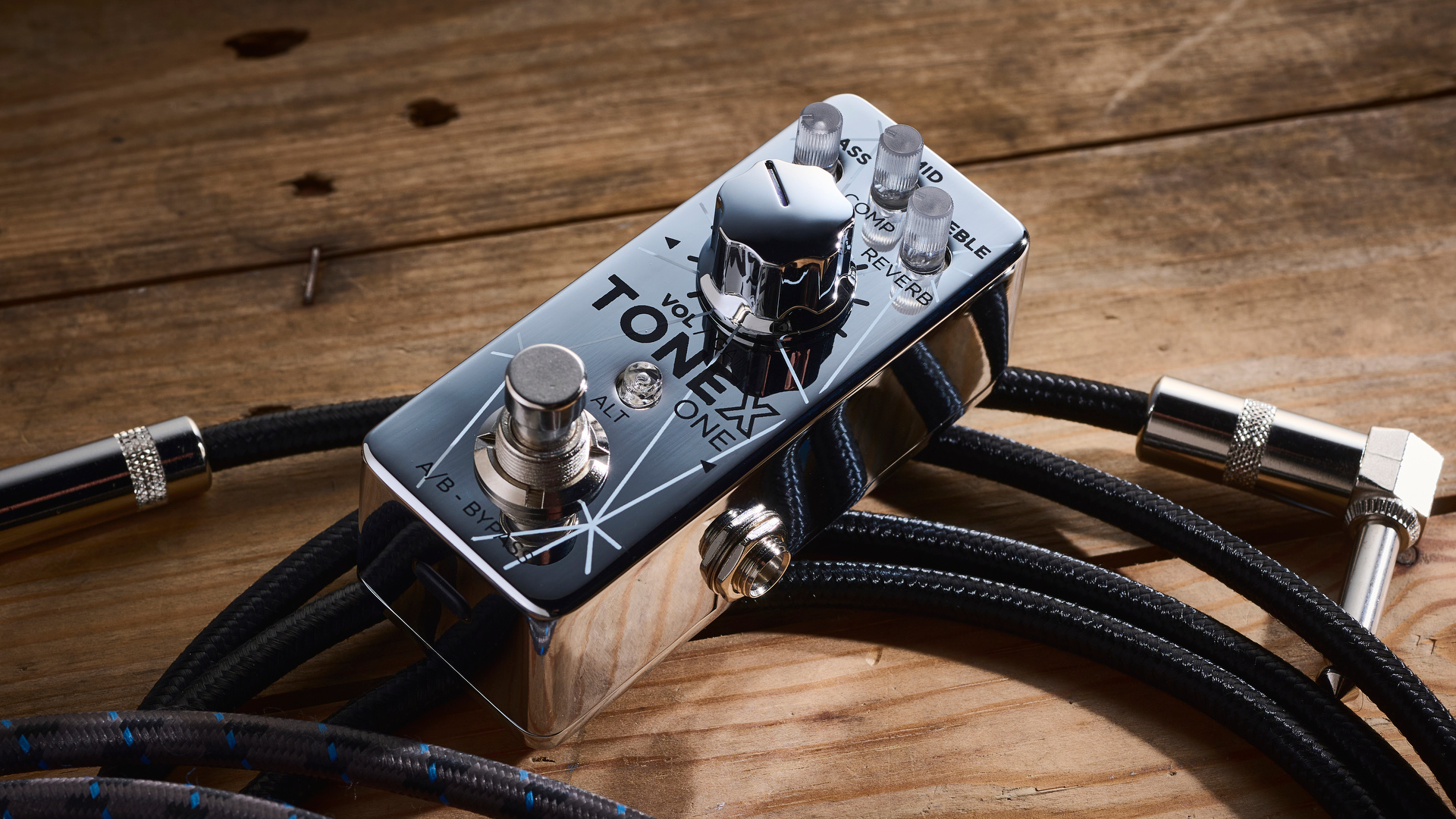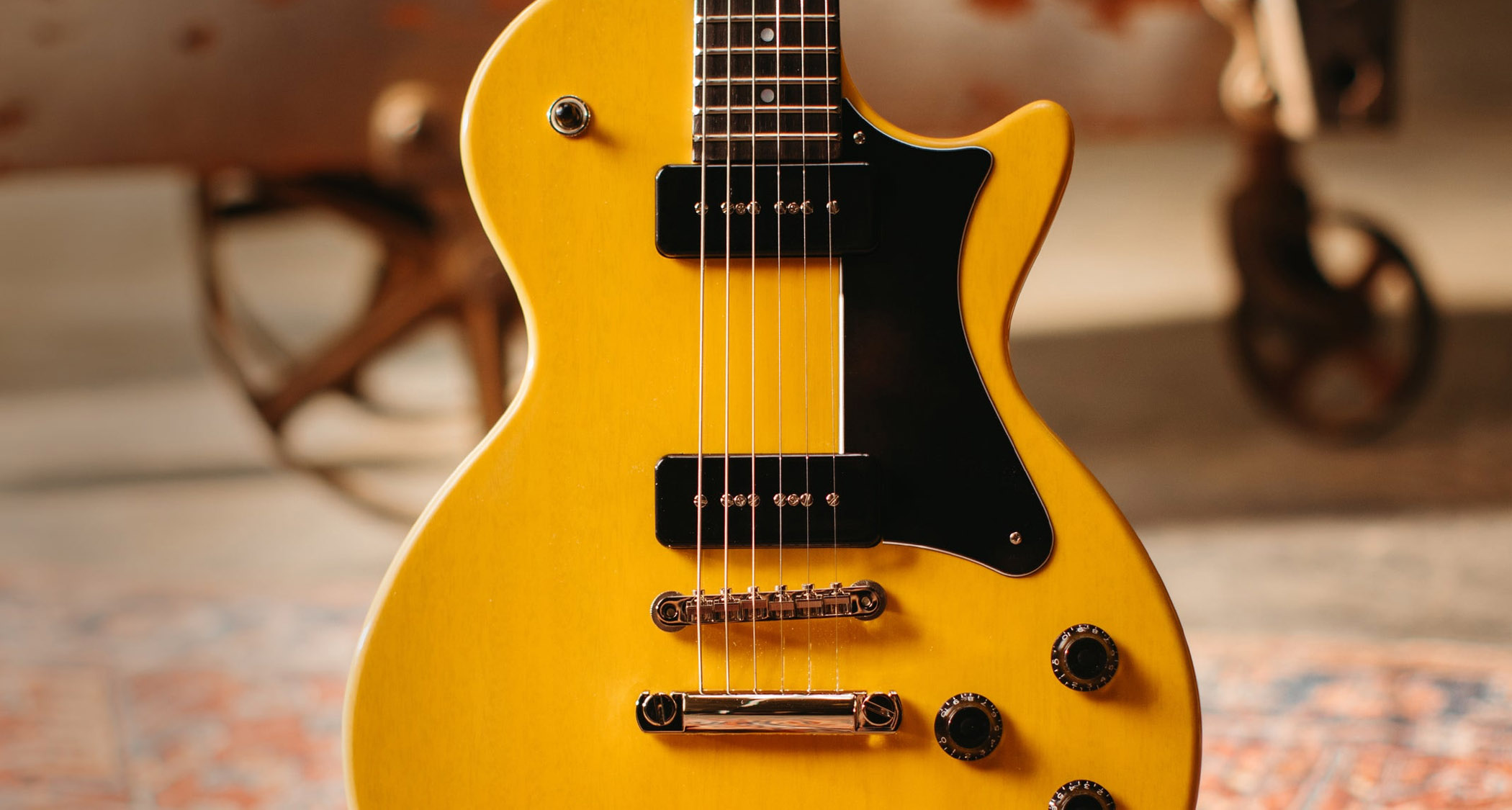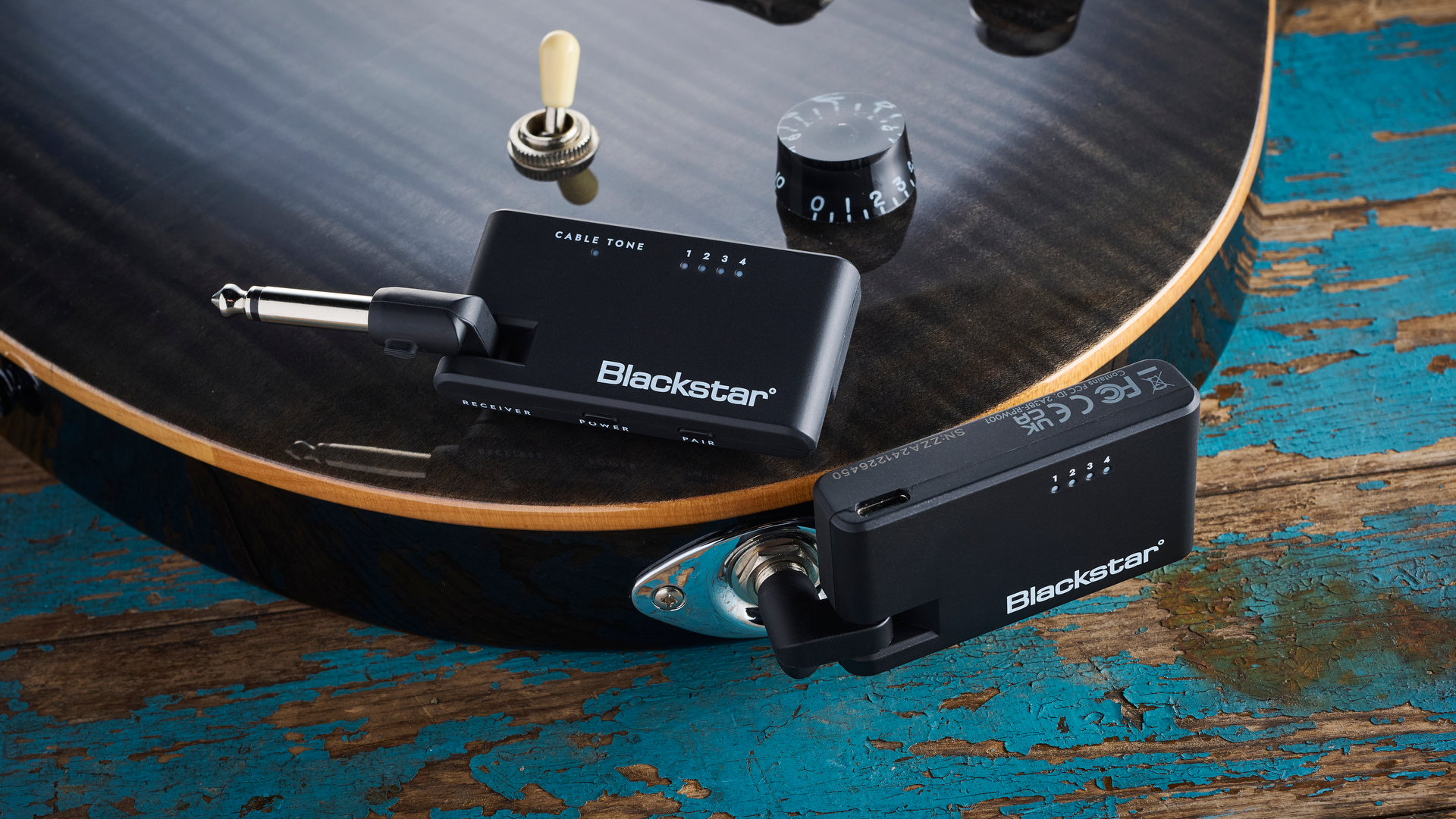Guitar World Verdict
The Studio Session is a gorgeous guitar, both sonically and aesthetically. The 57 Classic pickups deliver the famous Les Paul snarl in abundance, while the AA-flame top is good enough to make a Standard jealous. Throw in superb playability and more than a few modern appointments, and you get the best Studio in the Gibson catalog.
Pros
- +
Stunning finish.
- +
Fantastic playability.
- +
Super lightweight.
Cons
- -
Perhaps too modern for purists.
- -
Small blemish on the top of our test guitar.
- -
The coil tap isn't the greatest.
You can trust Guitar World
What is it?
Released in the early eighties as a less flashy alternative to the Les Paul Standard, the Studio looked to sound and play every bit as good as Gibson's flagship model, just without all the bells and whistles. Now, a little over 40 years later, the beloved guitar has been revised, remodeled, and redesigned in four separate guises – the Studio, Studio Flame Top, Studio Modern, and with the all-new Session model we are looking at today, the line between the fabled Standard and its less expensive stablemate is getting increasingly blurred.
The iconic mahogany body ditches the plain maple of the previous iteration and is now topped with a gorgeous AA-figured cap and is lightened with the aid of Gibson's Ultra-Modern weight relief. The standardization continues to the slim taper mahogany neck, which now sees the addition of binding – a feature that is available on all four versions in the current Studio line. The neck is adorned with a jet-black ebony fretboard, 22 medium jumbo frets, and acrylic trapezoid inlays, and the whole thing is crowned with the classic Gibson headstock, legendary mother-of-pearl logo, and Grover Rotomatic tuners.
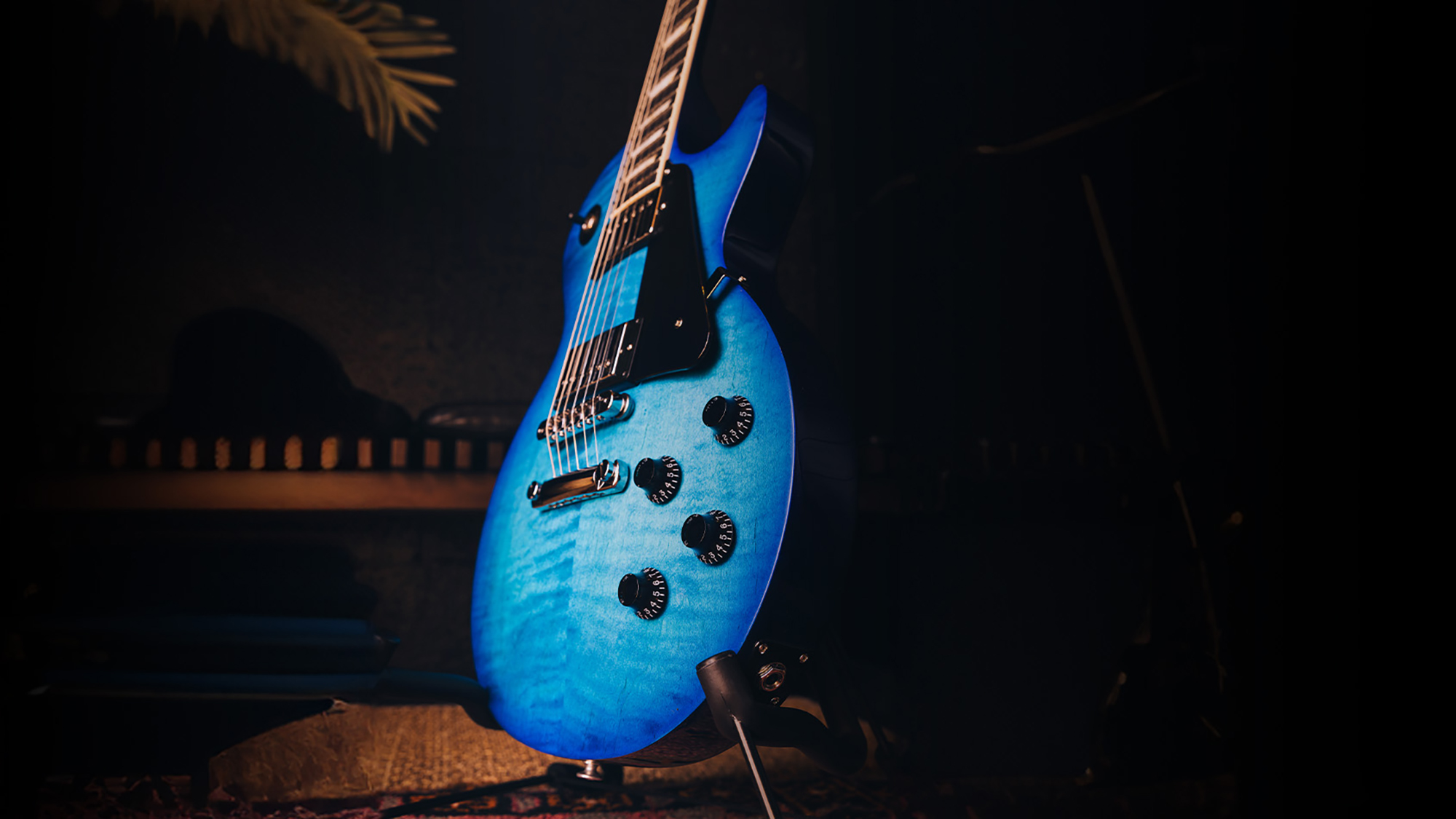
Flip the guitar over, and you'll be greeted with the Modern Contoured Heel, a design feature that offers players unparalleled upper fret access by eliminating the bulky area where the body meets the neck.
Tonally, the Studio Session lives up to its name by offering players a smorgasbord of sonic possibilities. A pair of '57 Classic pickups – with the plus variant in the bridge – drive this Les Paul, which delivers a range of golden-era tones that are ideal for hard rock and blues alike. Hidden within the controls are push/pull coil taps in both volume knobs, while the tone knobs pull out to engage an out-of-phase setting and pure bypass switching (the latter bypassing the tone and volume circuits).
The Studio Session is available in multiple finish options, from the traditional Honey Burst and Bourbon Burst for the purists to the electrifying Cobalt Blue and moody Translucent Ebony Burst that will appeal more to contemporary players. Of course, as you'd expect, each version is wrapped in a shiny, full gloss nitrocellulose lacquer and shipped with a deluxe padded soft shell case.
Specifications
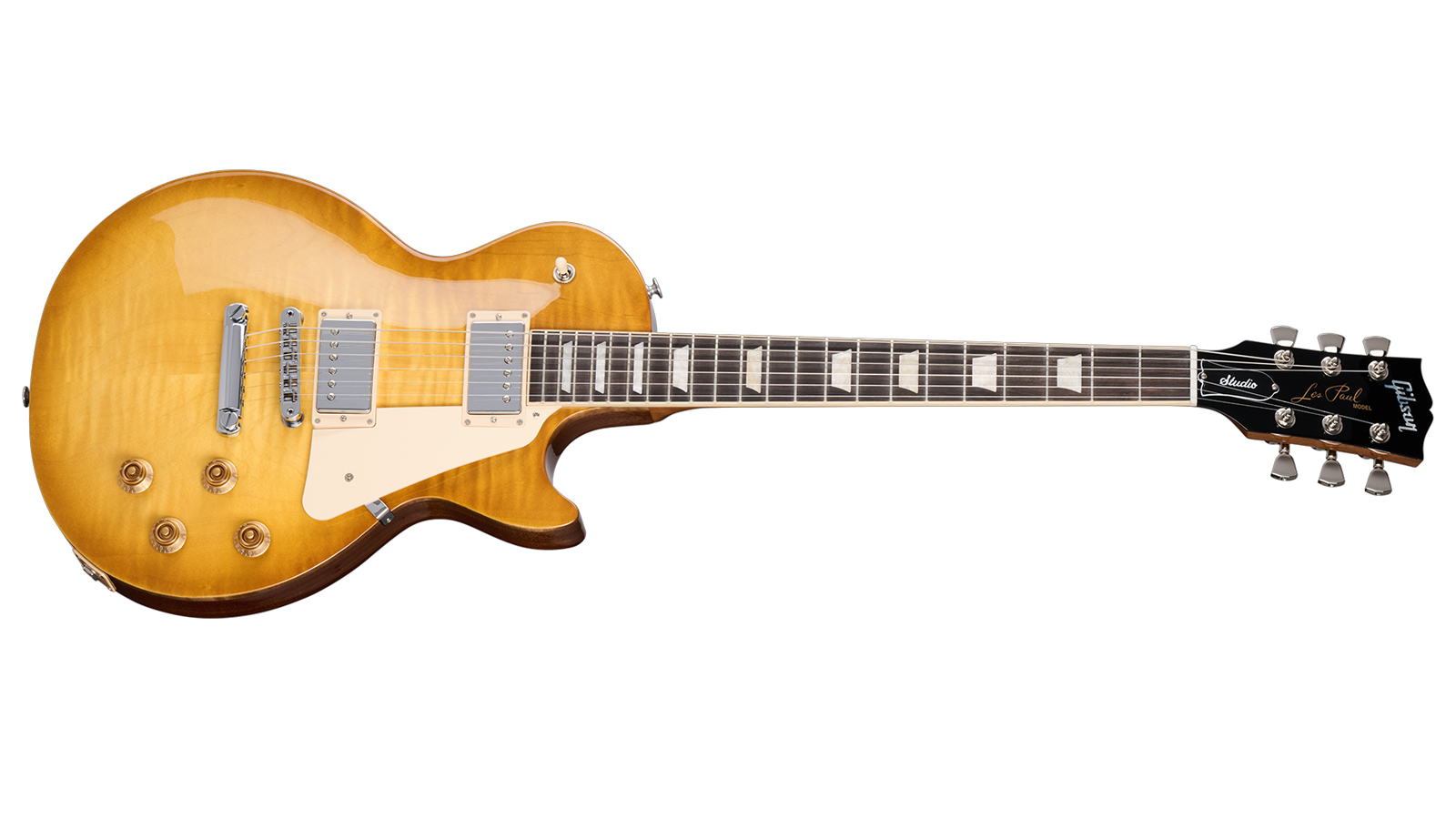
- Launch price: $1,999/£1,899/€2,199
- Type: Six-string electric guitar
- Made: USA
- Body: Mahogany
- Neck: Mahogany
- Fingerboard: Ebony
- Scale length: 628.65 mm / 24.75 in
- Nut/width: Graph Tech/ 43.05 mm / 1.694 in
- Frets: 22, medium jumbo
- Hardware: Aluminum Nashville Tune-O-Matic bridge, Grover Rotomatic tuners
- Electrics: '57 Classic +/ '57 Classic
- Left-handed options: No
- Finishes: Honey Burst, Bourbon Burst, Cobalt Blue, Translucent Ebony Burst
- Case: Gibson Gig Bag
- Contact: Gibson
Build
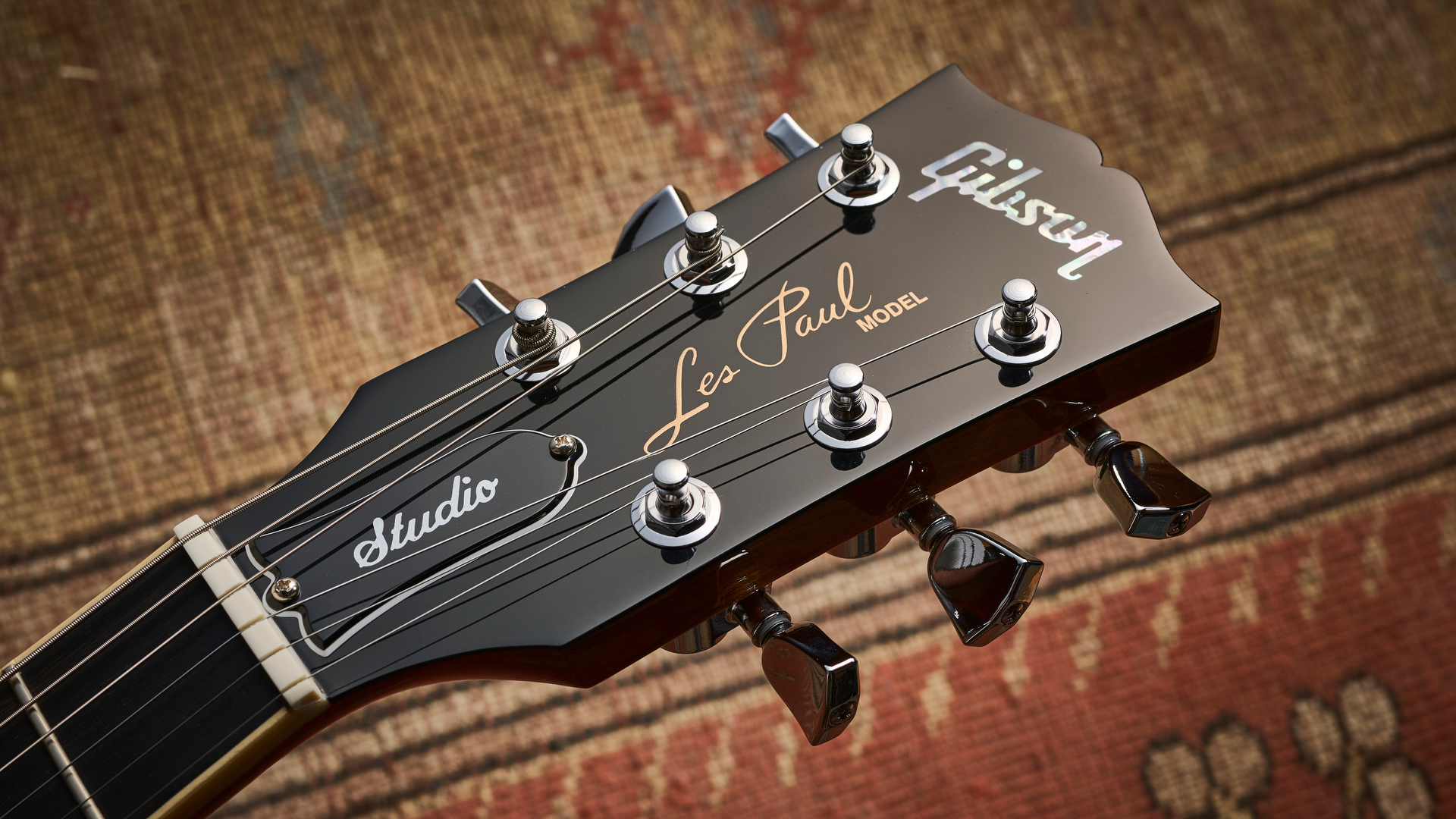
Unfortunately, pictures don't seem to do the Studio Session justice, but move the guitar in the light, and the top comes to life
Handling the Studio Session for the first time and casting my eye over its clean and well-applied Honey Burst finish, I'm once again reminded that Gibson is currently producing some of the finest guitars in their history. There's no two ways about it, this guitar is stunning to look at – to the point where I'm starting to doubt it's even a Studio.
The AA flame top is gorgeous, with a lovely wood grain pattern that covers the width of the body vertically, while the bolder tiger stripe-like flames engulf horizontally. Unfortunately, pictures don't seem to do the Studio Session justice, but move the guitar in the light, and the top comes to life. That said, there is one small imperfection on the top near the toggle switch. Don't get me wrong, it's certainly not a deal breaker, but it does detract from the guitar's beauty somewhat.
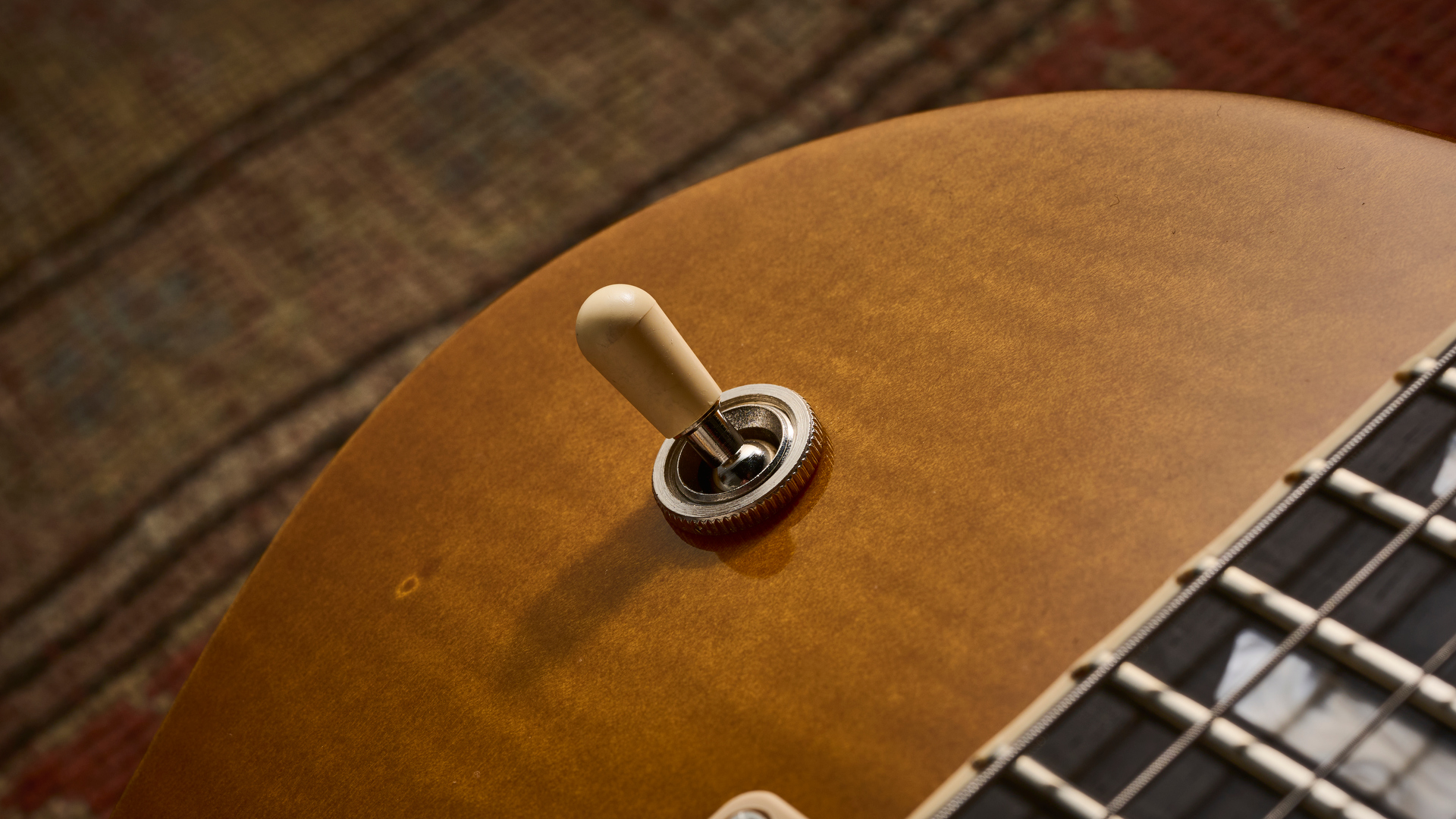
Moving on to the neck, and everything is as it should be. The fretwork is neat and tidy and well enough polished, while the binding has been expertly applied and scraped. I'm liking the look of the ebony fingerboard too, which is peppered with the traditional trapezoid inlays. The fingerboard does show the odd tooling mark here and there, but it's nothing that I haven't seen on even higher-end Les Paul models.
The modern weight relief is often the subject of harsh criticism from Gibson purists who think a heavy Les Paul is a "real" Les Paul. This is an ideation I've never subscribed to. While not for everyone, chambered Les Pauls can be some of the most resonant around, and that's certainly true for this particular Studio Session. Even unplugged, it sounds "alive", and I must admit its lightweight nature is very appealing to me – let's just hope this extra resonance translates to its electrified tone.
Playability
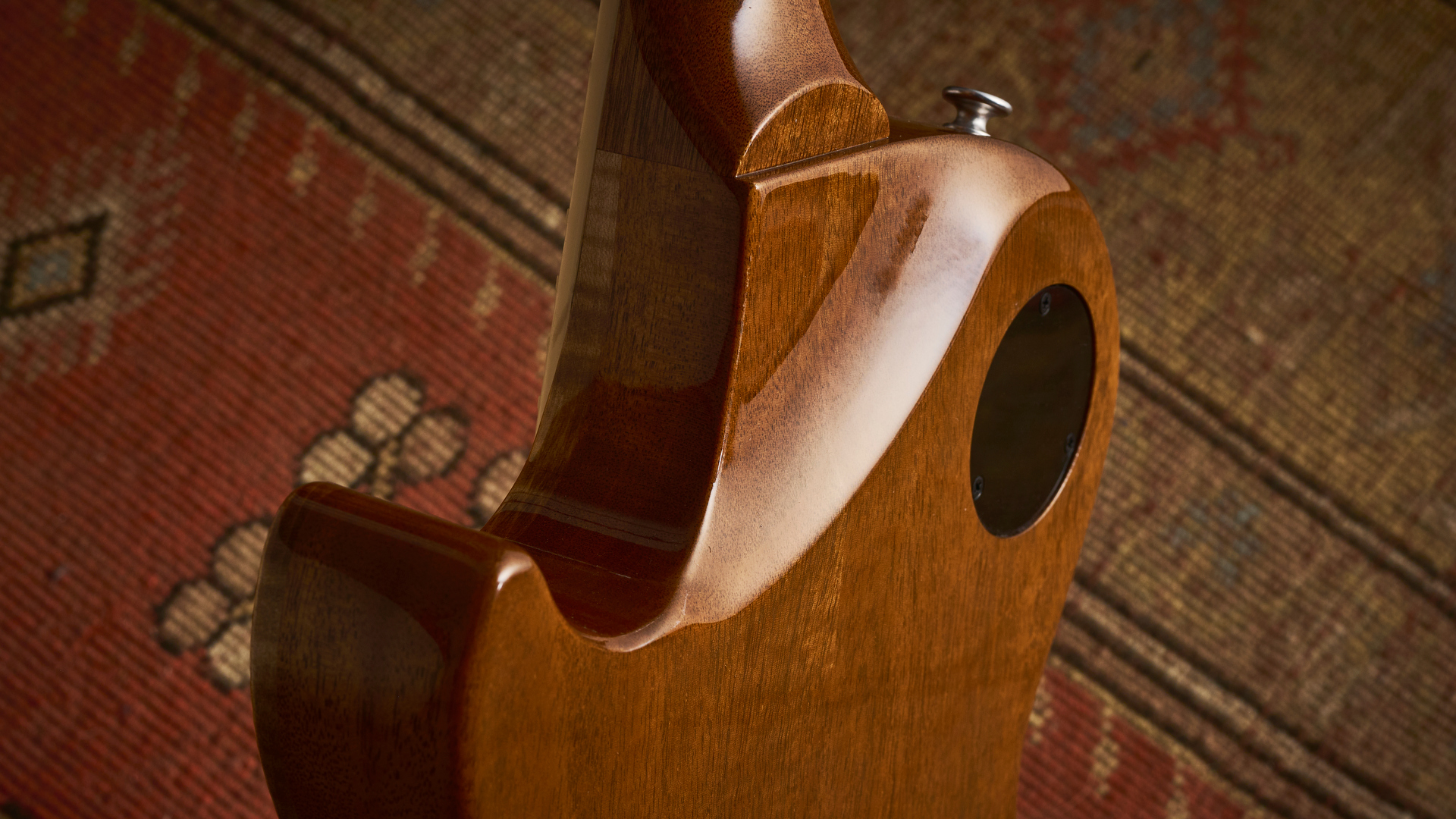
The slight profile leads to a lightning-fast guitar that makes short work of gravity-defying legato shred but does leave me wanting a little more heft for chord work
Turning my attention to the guitar's playability, and there's no doubt I'm dealing with a modern Les Paul. While the neck is billed as the typical Slim Taper profile found on many Gibson models, the Session feels slimmer than most – narrow, too. The slight profile leads to a lightning-fast guitar that makes short work of gravity-defying legato shred but does leave me wanting a little more heft for chord work.
Follow the neck from the nut to the dusty end, and you'll be greeted with what Gibson describes as the Modern Contoured Heel. This extreme heel carve is designed to eliminate the bulky area where the body meets the neck, giving players better access to the upper frets.
Of course, this isn't a new thing for Gibson, they've featured the same design on the Modern, Modern Figured, and Studio Modern – and a similar variation on the Les Paul Access – but if the chunky nature of a standard Les Paul has left you feeling frustrated in the past, then this might be the guitar for you.
For me, I like the design. I'll admit I've never really struggled with the traditional neck join, but it can't be denied that this contemporary option does make reaching those screeching high notes a lot easier.
Sound
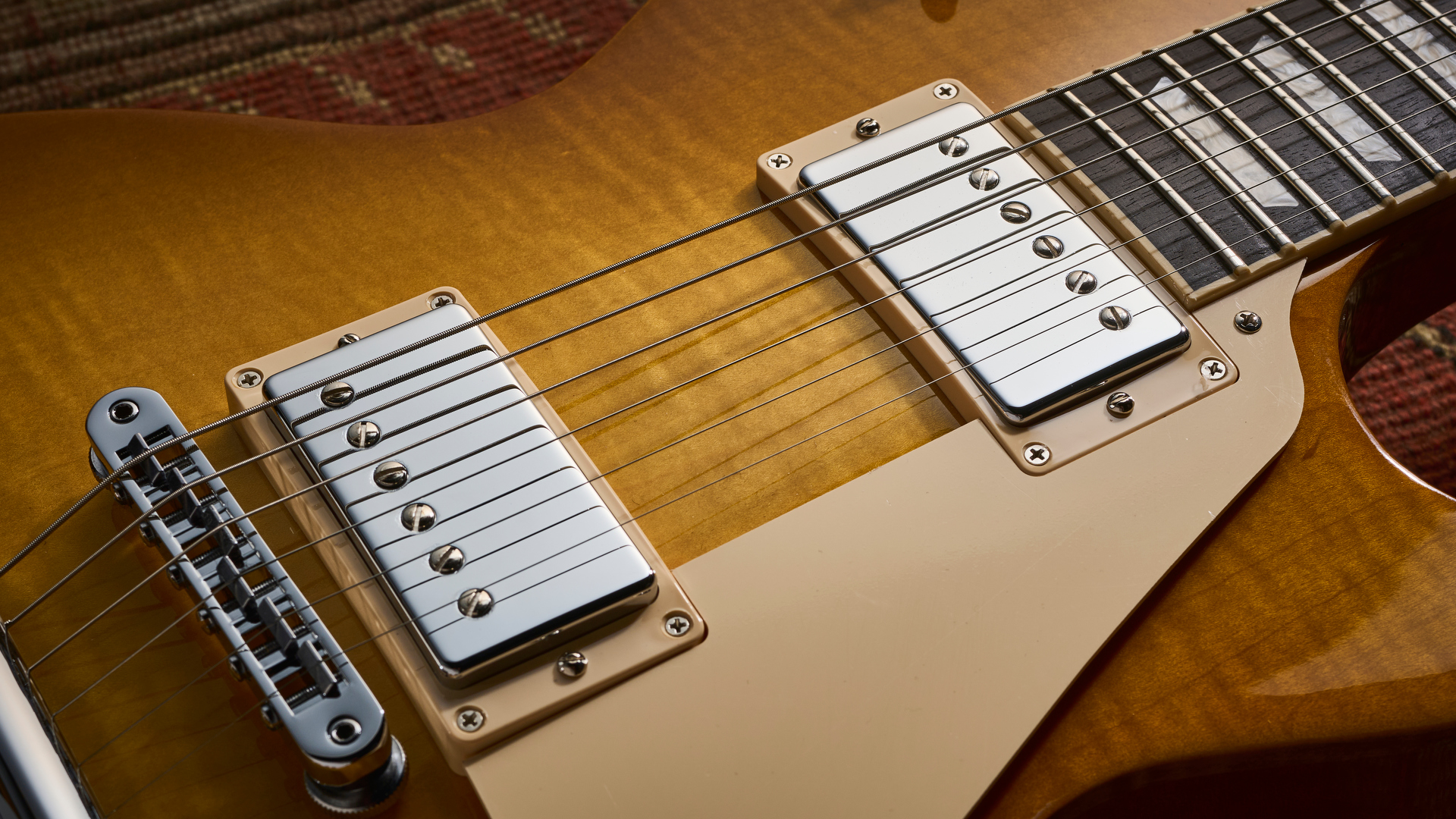
The neck position is smooth and rounded, while the slightly hotter bridge pickup unleashes a devastating bark when introduced to a healthy amount of gain
If you're going to name your new model the Studio Session, you better live up to it with a versatile collection of tones. I'm happy to report that this new Les Paul does, in fact, sound fantastic, but it may not be as versatile as it appears on the surface.
The 57 Classic and 57 Classic + pickup set is a popular duo among Gibson fans – and for good reason. Responsive, articulate, and harmonically rich, they deliver the exact tone you'd expect from this famed singlecut. The neck position is smooth and rounded, while the slightly hotter bridge pickup unleashes a devastating bark when introduced to a healthy amount of gain. Now, if this was all the guitar offered, I'd be happy!
Taking a look at the extra electronics, and we have a plethora of tonal options via the onboard controls. Loaded with push/pull coil tap functionality – accessible from each volume control – you have the ability to access single-coil-like tones at the pull of a dial. Now, while these are serviceable, they aren't quite as good as others on the market. To me, when tapped, the pickups sound a little scratchy and lackluster - and not bright and spanky like a true Strat.
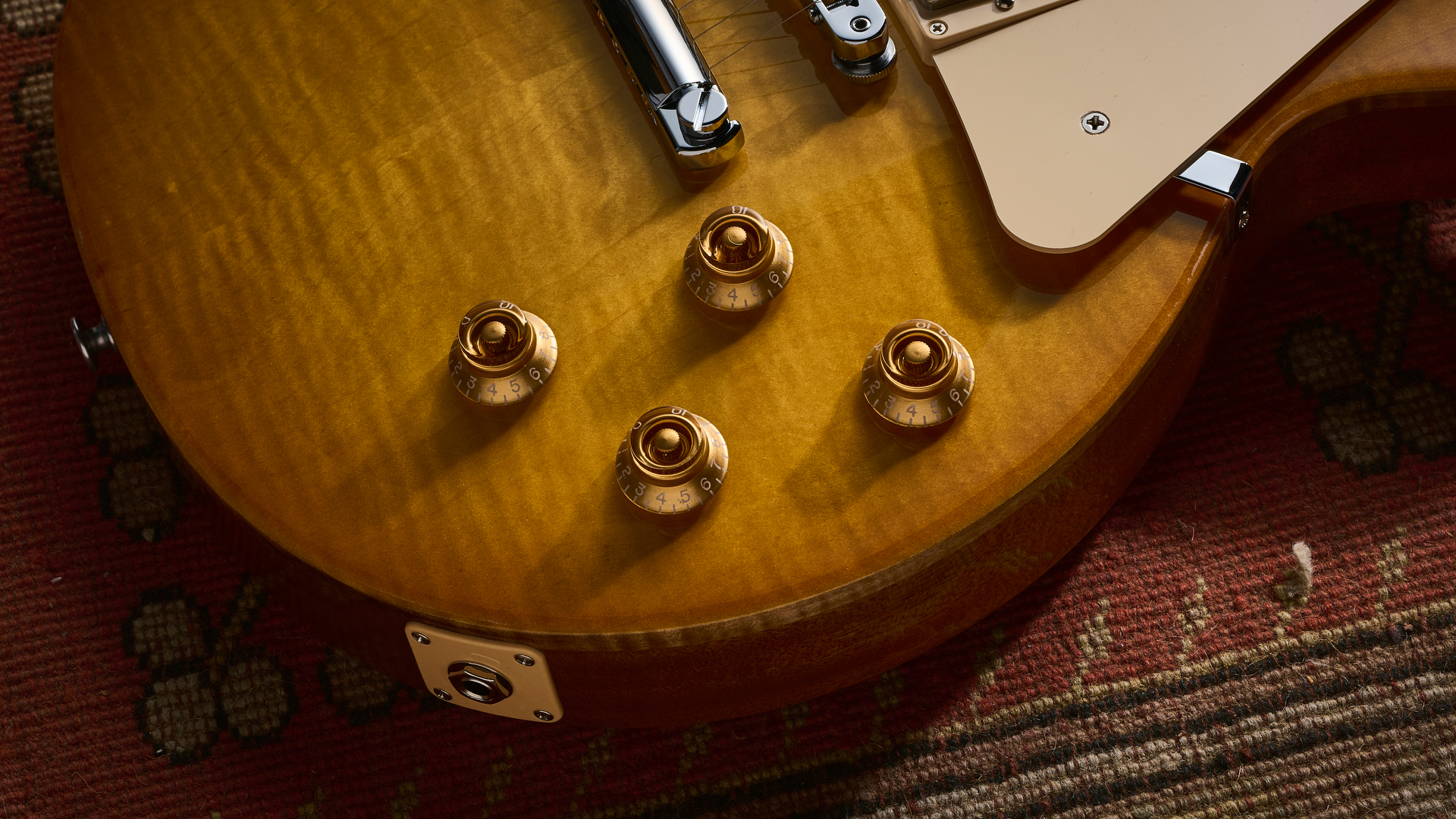
Overall, this is a great-sounding guitar that convincingly delivers the full-fat tones found on more expensive models
Pulling the rhythm tone knob grants access to an out-of-phase tone that's great for achieving that famous 'Greeny' sound – a tone I like very much.
Now, Gibson may call this "modern wiring," but fans of the brand will know it has been around for a very long time – in fact, it's the same wiring that was found on the Les Paul Standard before the new management took a back-to-basics approach with their new models. I have the same setup on my own Gibson Les Paul Standard, and I can confidently say I've used the coil taps twice in the 9 years I've had the guitar. That said, I do use the other functionality. I use the out-of-phase switch a lot when recording lead lines, so I'm happy to see it included on the Studio Session.
In case that isn't enough, lurking behind the lead tone knob is a Pure Bypass switch that renders all your controls inactive and sends your bridge pickup directly to your output jack – ideal if you want to quickly take a lead break then jump back to your rolled-down clean tone.
Overall, this is a great-sounding guitar that convincingly delivers the full-fat tones found on more expensive models. Okay, many players may not use every one of the switches, but it is nice to have them if you plan to experiment tonally in a recording session.
Verdict
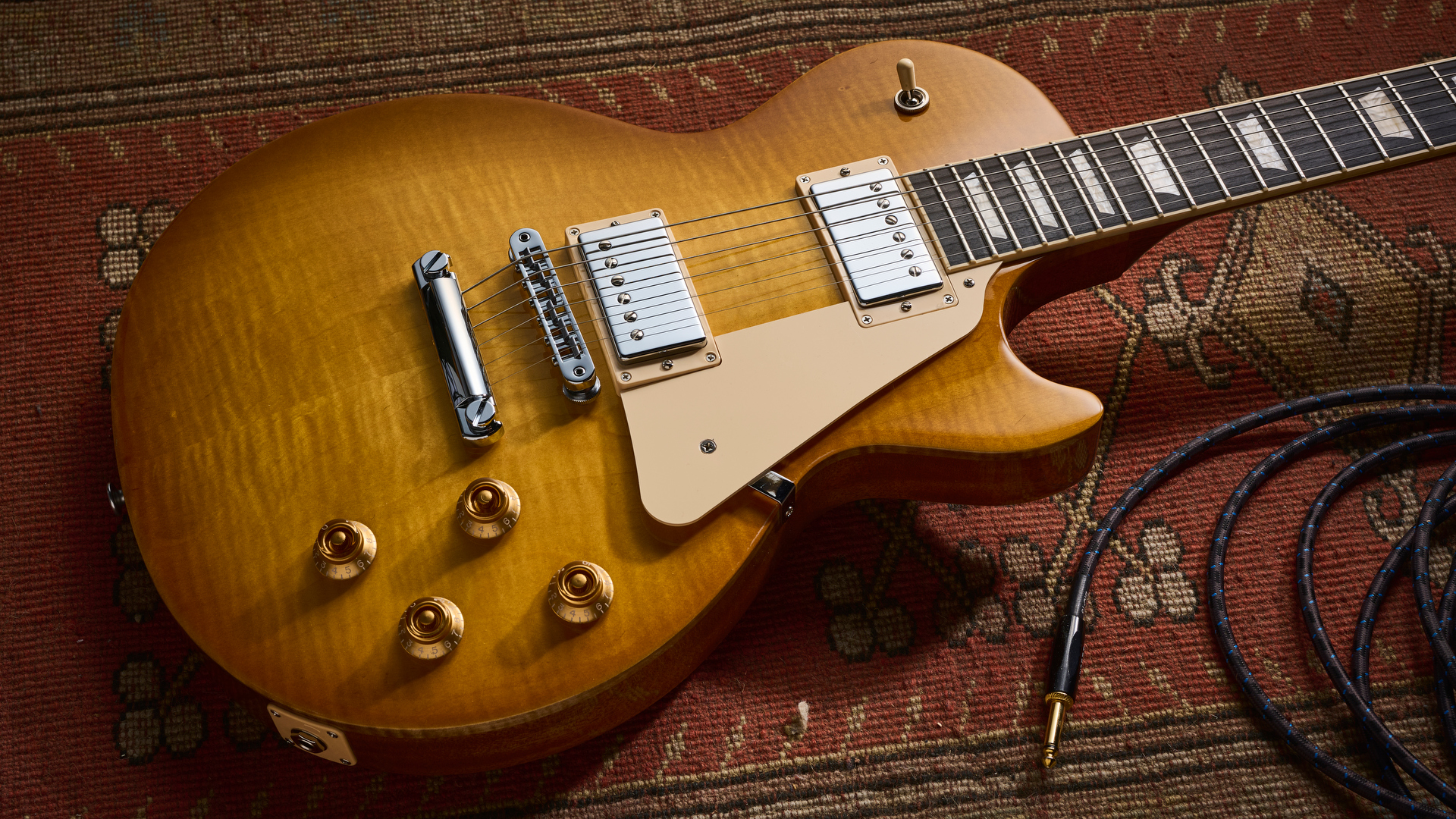
I had a lot of fun with the Les Paul Studio Session; in fact, out of the four Studio models in the current catalog, it very well may be the standout star.
Personally, I can't help but feel the Studio line is becoming a little bloated and confusing. With a quad of models all presenting slight variations on a common theme, it could be argued that Gibson should streamline the offering to a standard Studio, which retains its traditional appointments, and the Studio Session, which offers players something a little more contemporary, without straying too far from Gibson's well-trodden path.
Heck, Gibson's own marketing calls the new Studio Session "The One," so there's an even stronger argument to be made that the entire line could be distilled down to just this single guitar - something I'd totally be on board with if I'm honest.
The Session successfully combines all the best elements from each of the other Studios, such as vintage styling and sound, modern playability, and a firey top that belongs on a Standard, and for that reason, I think it's by far the best value Studio Gibson currently offers.
Guitar World verdict: The Studio Session is a gorgeous guitar, both sonically and aesthetically. The 57 Classic pickups deliver the famous Les Paul snarl in abundance, while the AA-flame top is good enough to make a Standard jealous. Throw in superb playability and more than a few modern appointments, and you get the best Studio in the Gibson catalog.
Hands-on demos
Gibson Gear Guide
Long & McQuade Musical Instruments
Also try
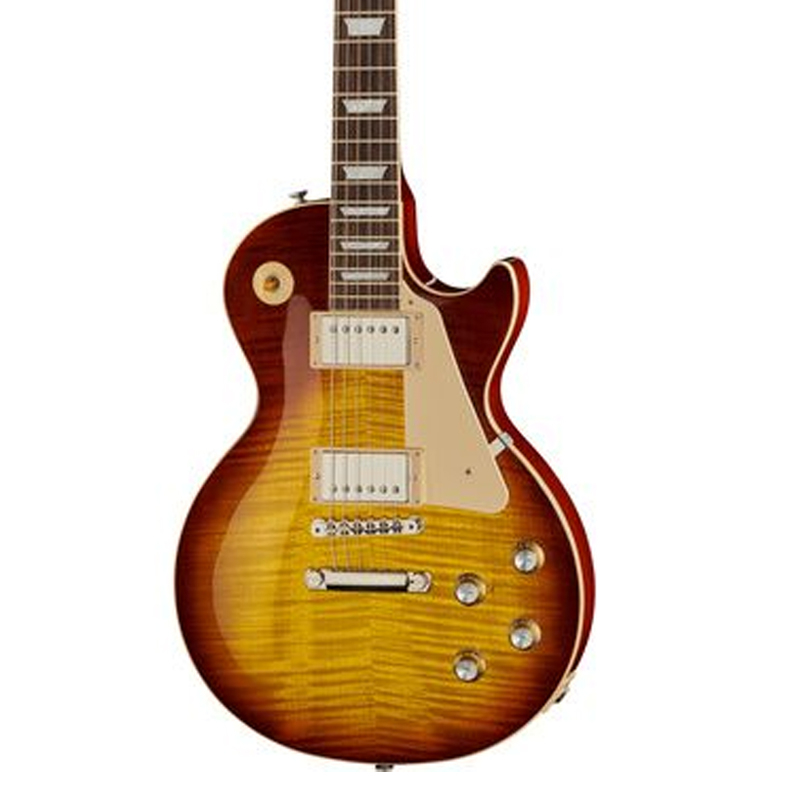
The Standard is Gibson's flagship Les Paul and arguably the most iconic. From its beautiful flame maple top, bound body, and mother-of-pearl Gibson logo to the throaty mid-range bite of its humbucking pickups, this guitar sounds just as good as it looks.
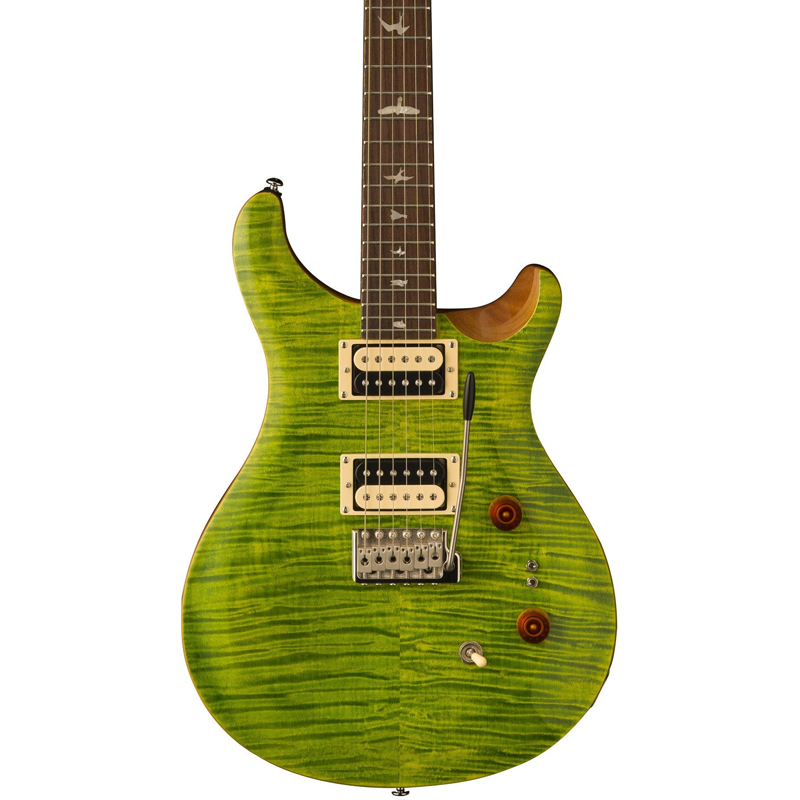
It's no secret that we love the PRS SE Custom 24 here at Guitar World. The Wide Thin neck profile strikes a neat balance between comfort and speed, while the coil-tap pickups ensure you have every tone possible at your disposal.
Read more: PRS SE Custom 24 review
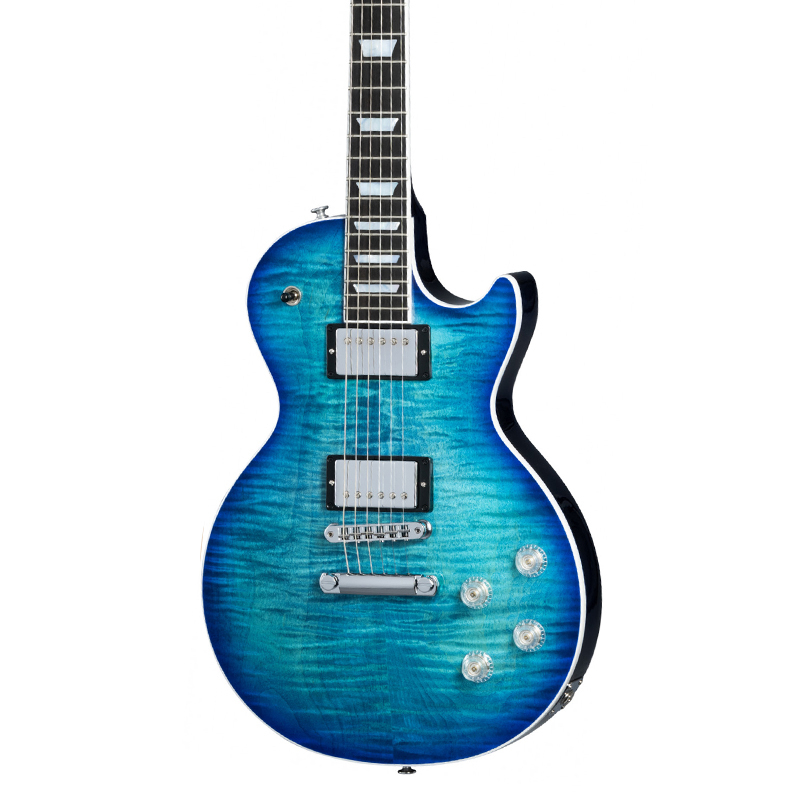
Gibson has always been cutting-edge, and the Les Paul Modern proves they are still innovating. This contemporary instrument is loaded with features that take the Les Paul into a new sonic place.
Read more: Gibson Les Paul Modern Figured review
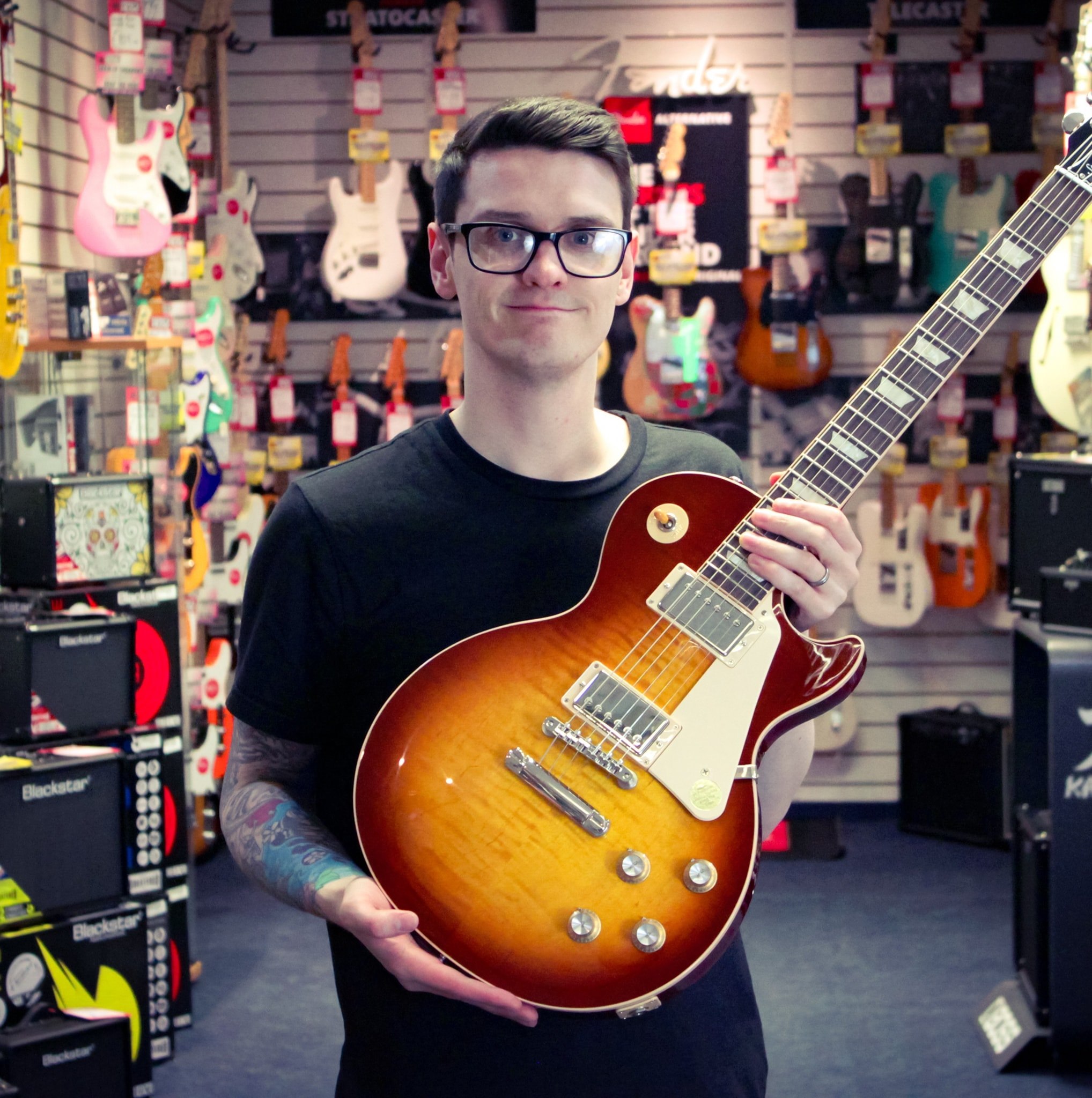
Daryl is a Senior Deals Writer at Guitar World, where he creates and maintains our 200+ buyer's guides, finds the best deals on guitar products, and tests the latest gear. His reviews have been featured in prominent publications like Total Guitar, Future Music magazine, and MusicRadar.com.
During his career, he has been lucky enough to talk to many of his musical heroes, having interviewed Slash and members of Sum 41, Foo Fighters, The Offspring, Feeder, Thrice, and more. In a past life, Daryl worked in music retail. For a little under a decade, he advised everyone from absolute beginners to seasoned pros on the right gear for their needs.
Daryl is also a fully qualified sound engineer, holding a first-class Bachelor's degree in Creative Sound Production from the University of Abertay.
You must confirm your public display name before commenting
Please logout and then login again, you will then be prompted to enter your display name.
“A virtuoso beyond virtuosos”: Matteo Mancuso has become one of the hottest guitar talents on the planet – now he’s finally announced his first headline US tour
“His songs are timeless, you can’t tell if they were written in the 1400s or now”: Michael Hurley, guitarist and singer/songwriter known as the ‘Godfather of freak folk,’ dies at 83
“Finely tuned instruments with effortless playability and one of the best vibratos there is”: PRS Standard 24 Satin and S2 Standard 24 Satin review
